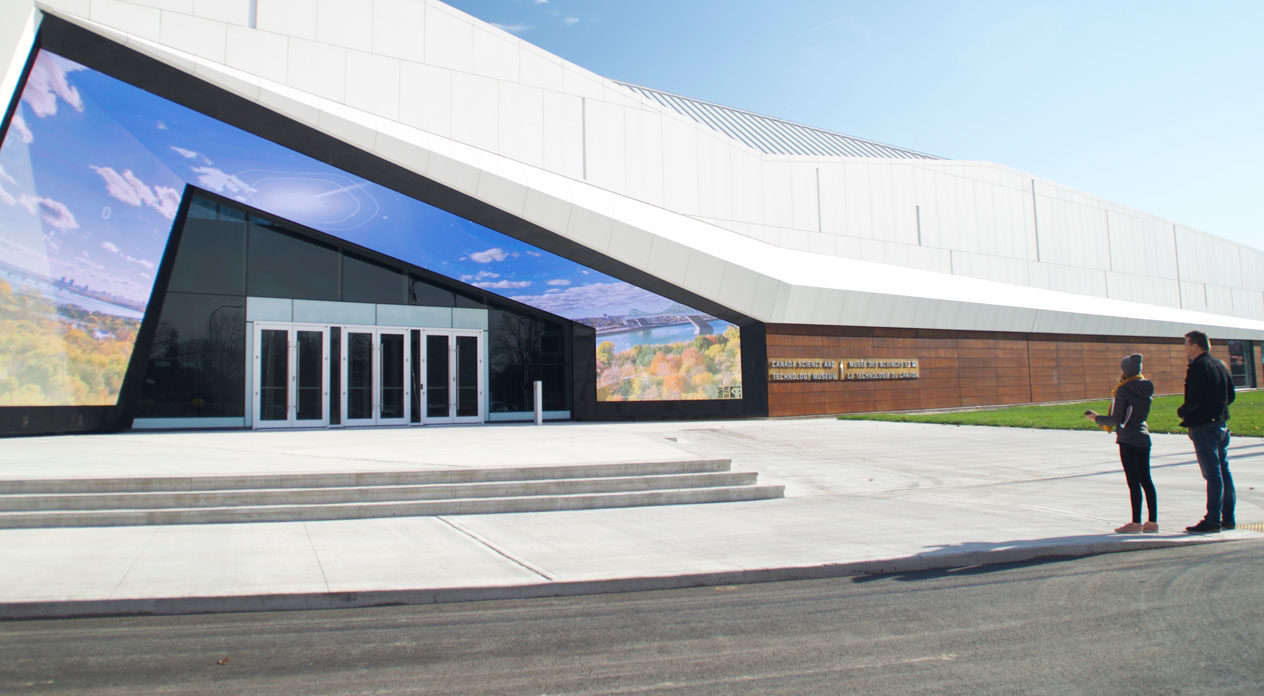The Canada Science and Technology museum opened on Nov. 17 to the general public following a long three year, $80 million dollar renovation. The rebuild has transformed the existing museum, with only the large locomotives remaining.
Unlike many museums, interior designers and architects working on the project were given a blank canvas to work with. This is noticeable from the moment you walk in, with LED displays around the doors, playing a looping video of the Northern Lights. The atrium and entryway is spacious and bright, unlike the old museum that looked grim and dark with a windowless entry. The atrium also holds the gift shop and entrance to the theatre.
The hallway then splits off into all of the other exhibits and sections, allowing visitors to truly experience the goal of the revamped museum, which is to increase the curiosity and pique the interest of those visiting.
“That explains [why] there’s such a nice flow to the museum. We’re getting away from a planned flow path because we know that people are like butterflies and explore at their own pace rather than follow a book,” said curator Michel Labrecque.
It is easy to find all of the exhibits now, with the colour on the walls being used to differentiate displays as opposed to the walls themselves. The first part of the tour we were given brought us to a large section that housed the Medical Sensation, Perceptions, Illusions, and Hidden Worlds exhibits. Medical Sensations is marked by orange paint whereas Hidden Worlds is marked by blue paint. Perceptions and Illusions is the middle point where the paints meet, with the “Crazy Kitchen” separating the two.
The museum now features several different interactive exhibits as well. Long-time favourite Crazy Kitchen is back, though the new additions are certainly more noteworthy. Gone is the video-game style snowmobile ride and the fiber optic tunnel play area, and in comes the new Virtual Reality train conductor experiences, arcade video games and interactive displays on the efficiency of various different bicycle models through the years.
But, the museum still has the local charm that you’d expect from an Ottawa-area museum. Sticks from Ottawa Senators players Erik Karlsson and Daniel Alfredsson are used to display the properties of carbon fibre and different sports equipment. Canadian athletes are featured heavily in the sports equipment and wearable sciences exhibition, including several hot button issues in Canadian sports being explained and displayed, such as the concussion crisis.
The unique Canadian vibe of the museum is also shown in several exhibits. There was a large effort undertaken to find and show lesser known Canadian science stories, such as opening a section on the mining industry in Canada. A broken down Smart car with all of its parts separated and suspended highlights just how much metal and material comes from Canada. The Video Game section has several mentions to two of the largest video game companies in the world, Electronic Arts and Ubisoft, who have both have large offices in Vancouver and Montreal. It walks visitors through the history of not only the games themselves, but the industry in Canada and how Canada has become a major player in video game displays.
The Science and Technology Museum strikes a delicate balance, with enough history and displays of old technology to satisfy any history buff, while also allowing the space to show off newer discoveries, some as recent as 2016. Even the exhibitions displaying mostly older technology have made modern additions, such as either having new interactive elements such as games or virtual reality, or showing off a progression from the past to the present, such as in the bicycles and mobility devices section.
Curators and staff however, have not forgotten the main demographic that will be visiting the newly designed building, which is families with young children. The largest of the exhibitions and the only one separated from Artifact Alley is the kids zone. When entering the space, there are several interactive displays in the play area. Large car tracks with build-your-own-car stations are among the more complicated activities, but simple things such as magic mirrors and the wind tunnel are great for the younger budding scientist.
Overall, the museum has taken a large step into modernity, which was desperately needed. It has also made strides towards a simplified and decluttered floor plan. With apps and a newly redesigned website on the way, the new direction of the museum is hoping to spark a new generation of Canadian scientists.
Photo by Samuel Gabriel






